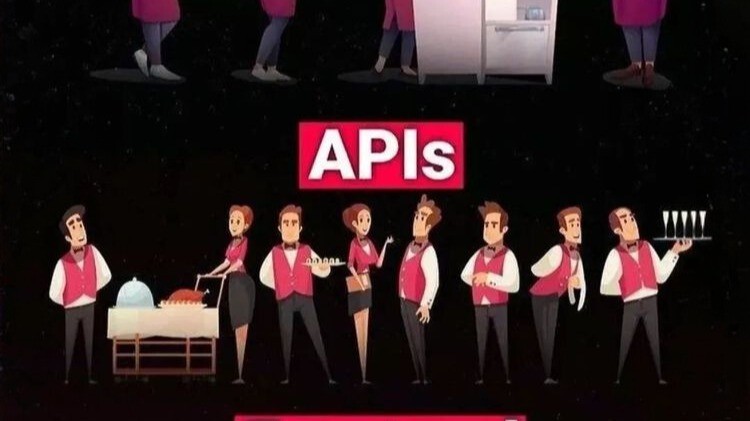
The Evolution of APIs: From REST to GraphQL and Beyond
Brij kishore Pandey
GenAI Architect | Strategist | Python | LLM | MLOps | Cloud | Databricks | Spark | Data Engineering | Technical Leadership | AI | ML
The Journey of APIs: A Historical Perspective
Also Join me for a Free workshop - Register here
You will learn
How to build enterprise-grade GraphQL applications?
How to implement enterprise-grade security?
Techniques for handling complex queries at scale?
Real-time data processing optimization? Live demo of building modern data access APIs
Early Days (1990s-2000s)
In the early days of web development, APIs were primarily RPC-based (Remote Procedure Calls), using protocols like SOAP (Simple Object Access Protocol). These APIs were:
- XML-based
- Highly structured
- Complex to implement
- Tightly coupled
Example of a SOAP request:
```xml
<?xml version="1.0"?>
<soap:Envelope xmlns:soap="url">
<soap:Header>
</soap:Header>
<soap:Body>
<m:GetStockPrice xmlns:m="url">
<m:StockName>IBM</m:StockName>
</m:GetStockPrice>
</soap:Body>
</soap:Envelope>
```
The REST Revolution (2000s-2010s)
REST (Representational State Transfer) emerged as a simpler alternative, offering:
- Stateless communication
- Resource-based architecture
- HTTP methods (GET, POST, PUT, DELETE)
- JSON as the primary data format
Example of a REST endpoint:
```http
GET /api/v1/users/123/orders
POST /api/v1/orders
PUT /api/v1/orders/456
DELETE /api/v1/orders/789
```
Top Types of Modern APIs
1. REST APIs
Advantages:
- Wide adoption
- Simplicity
- Stateless nature
- Caching support
Challenges:
- Over-fetching data
- Multiple round trips
- Versioning complexity
- Documentation overhead
2. gRPC APIs
Advantages:
- High performance
- Strong typing
- Bi-directional streaming
- Compact data format (Protocol Buffers)
Challenges:
- Learning curve
- Limited browser support
- Complex setup
3. WebSocket APIs
Advantages:
- Real-time communication
- Bi-directional data flow
- Reduced overhead
- Persistent connections
Challenges:
- Complex state management
- Connection maintenance
- Scaling complexity
4. GraphQL APIs
Advantages:
- Precise data fetching
- Single endpoint
- Strong typing
- Real-time capabilities
- Self-documenting
Challenges:
- Learning curve
- Caching complexity
- Query complexity management
The Rise of GraphQL
Historical Context
- Created by Facebook in 2012
- Open-sourced in 2015
- Adopted by GitHub in 2016
- Widespread adoption by 2018
Why GraphQL Was Created
- Mobile app data requirements
- API flexibility needs
- Network performance optimization
- Rapid development cycles
Core Concepts
1. Schema Definition
```graphql
type User {
id: ID!
name: String!
email: String!
orders: [Order!]!
}
type Order {
id: ID!
amount: Float!
status: String!
items: [Item!]!
}
```
2. Queries
```graphql
query GetUserOrders {
user(id: "123") {
name
orders {
id
amount
status
}
}
}
```
3. Mutations
```graphql
mutation CreateOrder {
createOrder(input: {
userId: "123"
items: [
{ productId: "456", quantity: 2 }
]
}) {
id
status
}
}
```
4. Subscriptions
```graphql
subscription WatchOrderStatus {
orderStatusChanged(orderId: "789") {
status
updatedAt
}
}
```
Enter Hasura: Modern GraphQL Engine
What is Hasura?
Hasura is an open-source engine that provides instant GraphQL APIs over new or existing databases. It offers:
- Automatic CRUD operations
- Real-time subscriptions
- Role-based access control
- Database change tracking
- Built-in caching
How Hasura Works
1. Database Connection
```yaml
# hasura configuration
version: 2
metadata:
- name: default
kind: postgres
configuration:
connection_info:
database_url: "postgresql://user:password@host:5432/db"
```
2. Auto-Generated APIs
Hasura automatically generates:
- GraphQL queries for reads
- Mutations for writes
- Subscriptions for real-time updates
- Relationships based on foreign keys
3. Permission System
```json
{
"role": "user",
"permission": {
"columns": ["id", "name", "email"],
"filter": {
"user_id": {"_eq": "X-Hasura-User-Id"}
}
}
}
```
Key Features
1. Real-Time Capabilities
- Live queries
- Event triggers
- WebSocket subscriptions
- Change data capture
2. Security
- Role-based access control
- Column-level permissions
- Row-level security
- JWT authentication
3. Performance
- Query optimization
- Connection pooling
- Caching
- Batching support
Modern API Development Best Practices
1. Security First
- Implement authentication
- Use authorization
- Enable SSL/TLS
- Rate limiting
- Input validation
2. Performance Optimization
- Implement caching
- Use pagination
- Optimize queries
- Monitor performance
3. Developer Experience
- Clear documentation
- Consistent naming
- Error handling
- Versioning strategy
Future of API Development
Emerging Trends
1. Serverless APIs
2. Edge Computing
3. AI-enhanced APIs
4. Federation and Composition
What's Next
- Enhanced real-time capabilities
- Improved type systems
- Better tooling
- Simplified deployment
Conclusion
The evolution from traditional APIs to GraphQL and tools like Hasura represents a significant shift in how we build and consume APIs. Understanding this progression helps developers make informed decisions about their API architecture.
Also Join me for a Free workshop - Register here
You will learn
Key takeaways:
- Choose the right API type for your needs
- Consider GraphQL for flexible data requirements
- Use tools like Hasura to accelerate development
- Focus on security and performance
- Plan for scalability
Would you like to:
1. Learn more about specific GraphQL implementations?
2. Explore advanced Hasura features?
3. See real-world case studies?
4. Understand specific security considerations?
Leave your questions in the comments below!
Module lead - | Full Stack Developer # .Net core ,Cloud Integration ,Microservices # MS Azure #Services #DesvOps #React.JS #Power apps #sharepoint,Angular.
3 周its informative!
--
1 个月Thank for sharing
Data Engineering Director at UBS Group | Cloud, Big Data & Analytics Leader | Agile & DevOps Transformation | Building Scalable Systems for High-Impact Results | Software Architecture Visionary
1 个月This is an insightful read, Brij kishore Pandey! The way you've mapped the evolution of APIs and reflected on its future prospects particularly in regards to GraphQL implementations, offers valuable perspective not just for developers but also for non-technical professionals. The seamless API is indeed the unsung hero in our growing interconnected digital ecosystem. Thanks for sharing your knowledge and vision, it's truly enlightening. Looking forward to your future posts!
Sales Executive at HINTEX
1 个月Absolutely! The evolution of APIs is fascinating, and it's crucial for us to stay updated on the latest advancements.